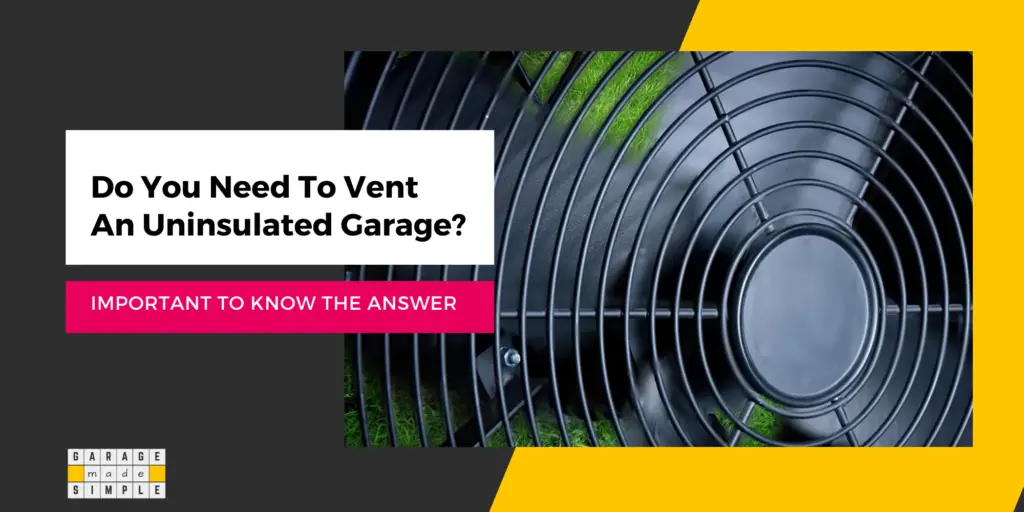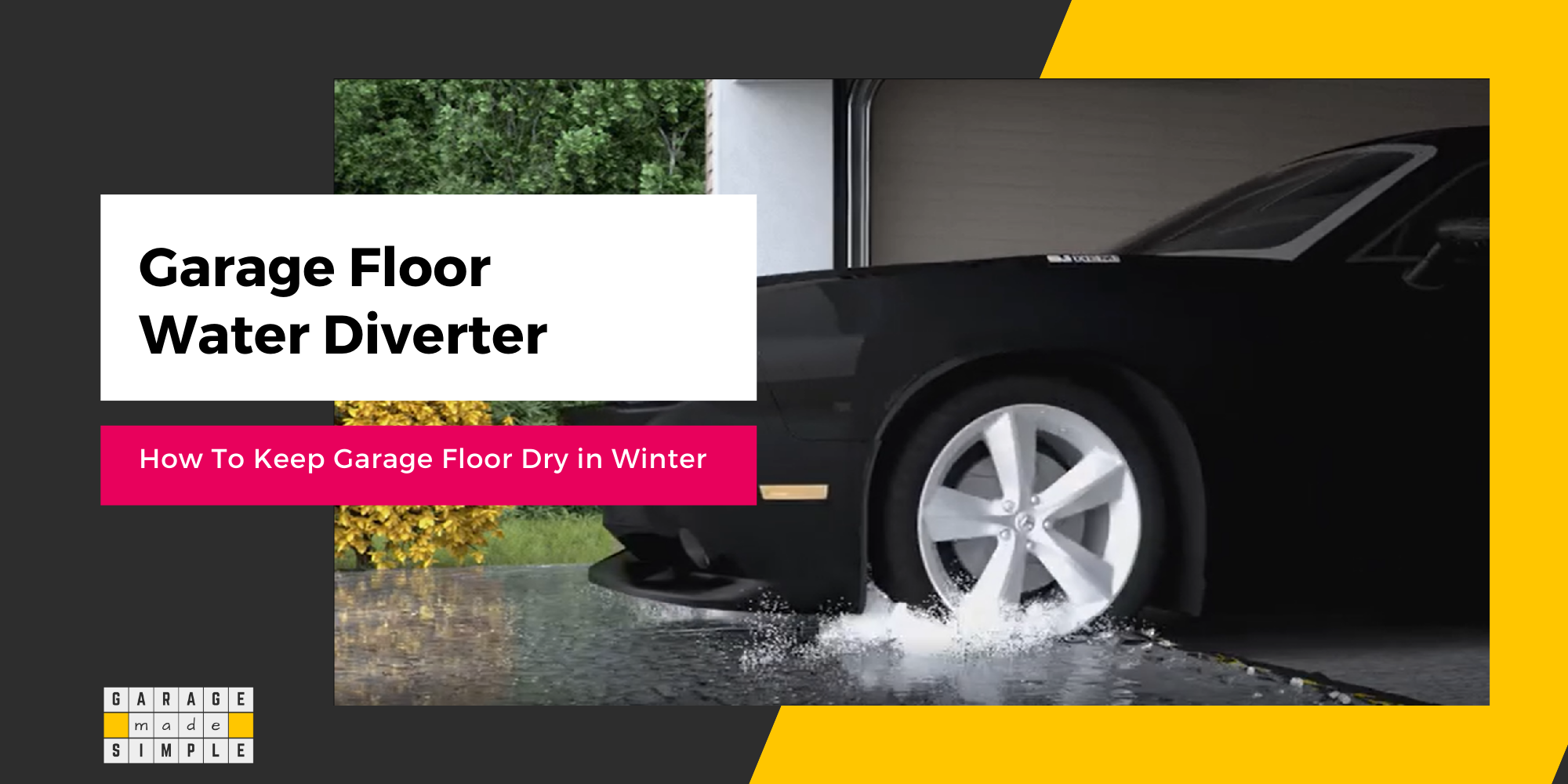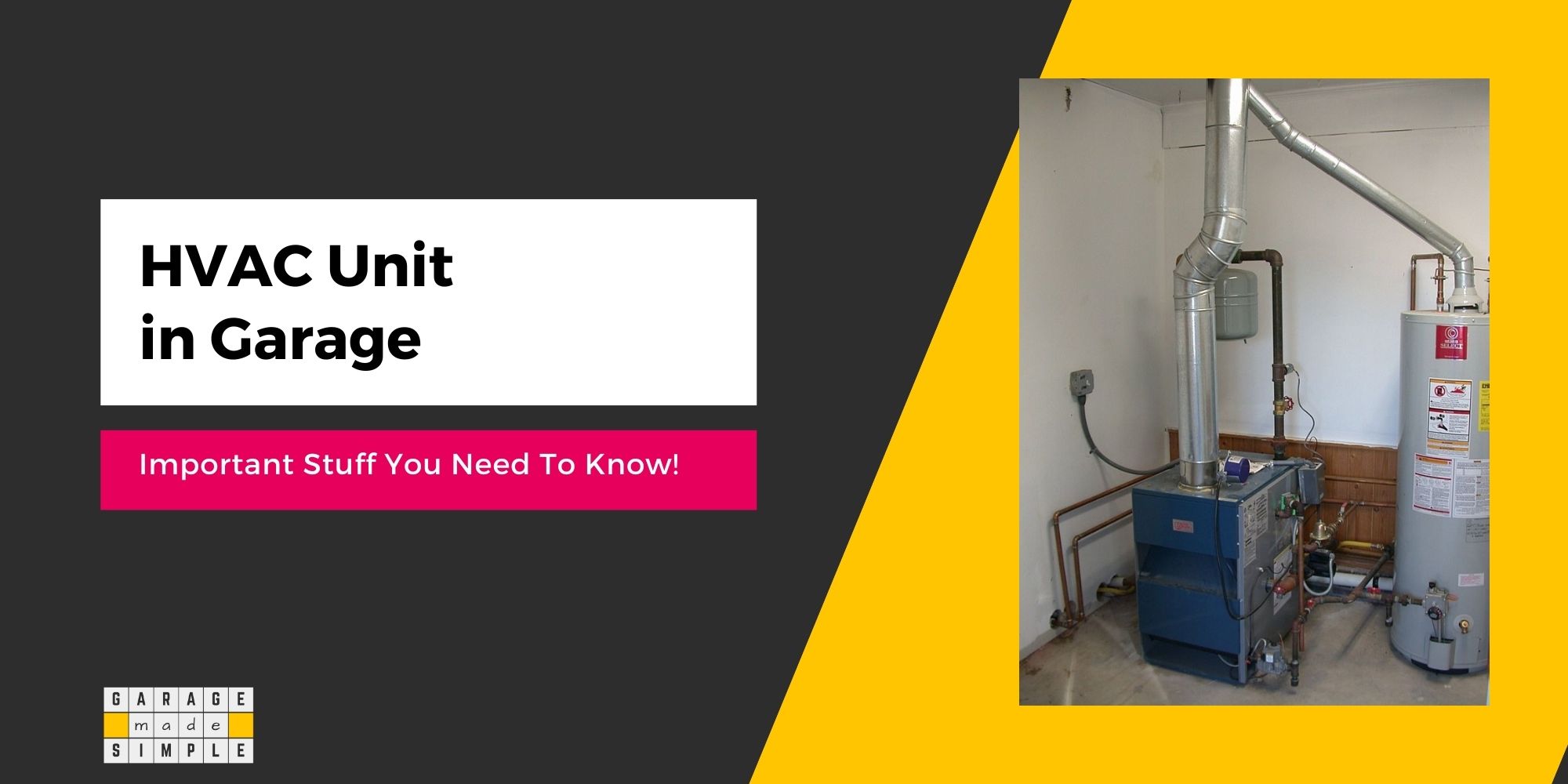Do You Need To Vent An Uninsulated Garage? (Important!)
garagemadesimple.com is a participant in the Amazon Services LLC Associates Program, an affiliate advertising program designed to provide a means for sites to earn advertising fees by advertising and linking to Amazon.com . The website is also an affiliate of a few other brands.
Do You Need to Vent an Uninsulated Garage?
Do you have a garage that is not insulated? Surely you have important and valid reasons for that. Maybe the climate does not require insulation or it is just that you plan to insulate it sometime in the future. Whatever the reason you may still be wondering if you need to vent an uninsulated garage?
The building code does not require you to ventilate a garage, insulated or uninsulated, attached or detached. However, garage ventilation is extremely helpful if you want a multi-use garage that includes parking, storage and hobby space.
Some of the distinct benefits from ventilating a garage, even an uninsulated garage, is that it helps
- Improve Indoor Air Quality (IAQ)
- Dissipate heat out of the garage
- Reduces condensation and mold growth
- Eliminates garage fumes & odors
In this post I shall explain each of the above benefits as well as the garage ventilation options available. So, let’s get into it.

Does Ventilation Improve Air Quality?
Ventilation is the process of airflow in and out of living spaces. Some of it happens naturally, some can be incorporated in the building design and some has to be forced using passive or active ventilation equipment.
The US Environmental Protection Agency (EPA) defines Indoor Air Quality (IAQ) as:
Indoor Air Quality (IAQ) refers to the air quality within and around buildings and structures, especially as it relates to the health and comfort of building occupants.
On the same website they give the recommended air changes per hour as per ASHRAE
ASHRAE (formerly called the American Society of Heating, Refrigerating and Air-Conditioning Engineers) recommends (in its Standard 62.2-2019, “Ventilation and Acceptable Indoor Air Quality in Residential Buildings”) that homes receive 0.35 air changes per hour but not less than 15 cubic feet of air per minute (cfm) per person. as the minimum ventilation rates in residential buildings in order to provide IAQ that is acceptable to human occupants and that minimizes adverse health effects.
Source: The US Environment Protection Agency (EPA)
Air Flow, Air Change, Ventilation, whatever you may call it has both a physical & psychological impact on us. Have you not felt your mood lift when you feel the gentle sea breeze or the crisp mountain air on your skin?
Vent your uninsulated garage and make it a happier place to work or work out in!
Does Ventilation Cool a Garage?
Just basic ventilation can cool down a room or a garage. Natural ventilation or airflow works on the principle that hot air is lighter than cold air. So when the air inside a garage heats up it rises up from the floor towards the ceiling.
You just need to design your garage to take advantage of this natural air movement. Provide a set of vents in the wall or the garage door at a low level. Provide another set of vents in the garage attic or the garage roof.
This is a very simple design to create air circulation. Hot garage air will rise to the top and exit from the vents in the roof. Cool air from outside will be sucked into the garage to replace it. The garage stays cool.
This is natural airflow and does not require use of any energy. Such ventilation is known as passive ventilation.
You can vent your uninsulated garage to keep it cool without spending any money on energy bills. How cool is that!
You can of course increase the effectiveness of such ventilation by using exhaust fans or even better, mini split air conditioners. I recommend using the following products from Amazon:
The exhaust fan is a relatively cheap garage ventilation option. You can mount it high on the side wall (or even above the garage door, if you do not have wall space). I like AC Infinity AIRLIFT T14, Shutter Exhaust Fan 14-inch with Temperature Humidity Controller available on Amazon.
A Mini Split Air Conditioner is an even better garage ventilation option. It can cool, heat, dehumidify and of course ventilate. It is quiet and does not need a big hole in the wall. The Indoor Unit and the Outdoor Unit can be mounted as per your need & convenience.
It is important to get the model which has sufficient cooling power for your needs. Typically an 18000 BTU should be fine for a 3 car garage. Check out 18000 BTU Mini Split Ductless Air Conditioner with 1.5 Ton Heat Pump AC/Heating System on Amazon.
Does Airflow Reduce Condensation?
Heating and Airflow are important and necessary to reduce condensation in a cold garage. Condensation is bad for your garage structure, items stored in the garage and your health, as it promotes growth of mold & mildew.
The garage air always has some water vapor in it. Whenever we say that the air is humid, what we are really saying is that there is too much water vapor in the atmosphere.
“Condensation is the process where water vapor becomes liquid. It is the reverse of evaporation, where liquid water becomes a vapor. Condensation happens one of two ways: Either the air is cooled to its dew point or it becomes so saturated with water vapor that it cannot hold any more water.”
Source: National Geographic
Condensation happens when warm humid air comes in contact with a cold surface such as the garage floor or wall. The air in contact cools down to below the dew point. The water vapor cools down and becomes liquid water droplets or dew on the cold surface.
Airflow or ventilation ensures that the air does not stay in contact with the cold surface long enough to cool down to below the dew point.
So, if you vent your uninsulated garage you will be able to reduce condensation and arrest mold & mildew growth.
How Do I Get Pollutants Out of My Garage?
Garage can have all types of fumes, odors & pollutants from the car and other items stored there. Often paints, cleaning chemicals and gardening supplies are stored in the garage.
Even the garbage bins may be stored in the garage temporarily, before they can be put on the curb for collection.
The garage workshop is another source of pollutants. Painting, welding, soldering, sawing and sanding are all activities that result in some amount of chemical fumes or powdery dust.
There is also the risk of Carbon Monoxide (CO) accumulating in the garage due to idling cars. Carbon monoxide is potentially lethal to human beings. It is tasteless, colorless and odorless, so you do not even know that you are breathing it. High enough quantities can cause you to pass out and even die.
Good ventilation in a garage, insulated or not, can ensure that the pollutants can be exhausted out from the garage. Garage ventilation is beneficial to your safety and health.
Thank you very much for reading the post. I do hope you found it informative and useful.






